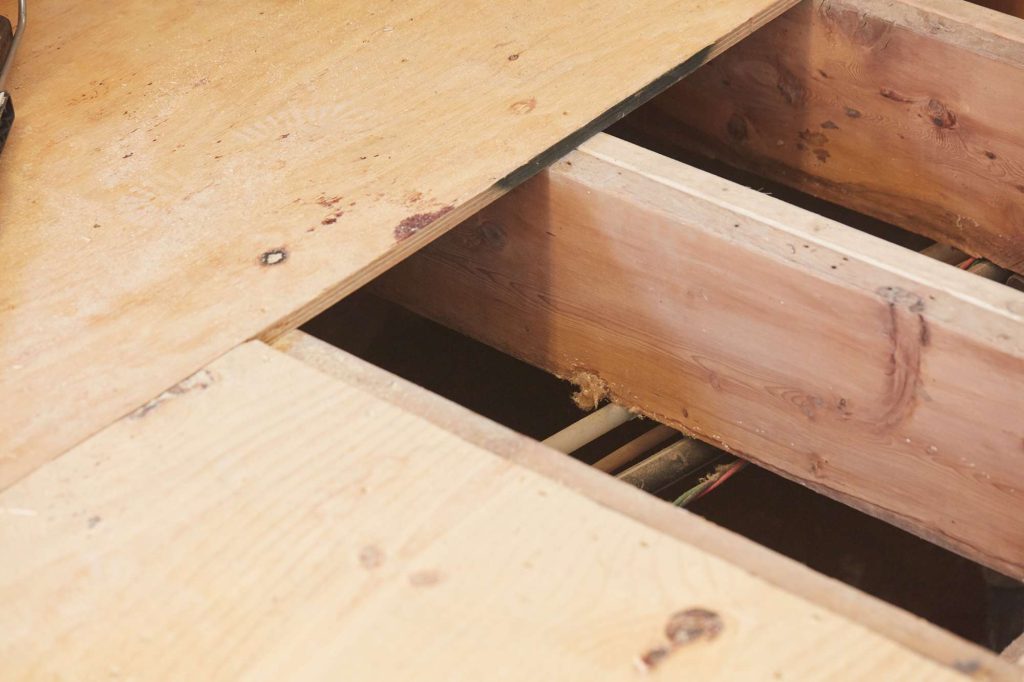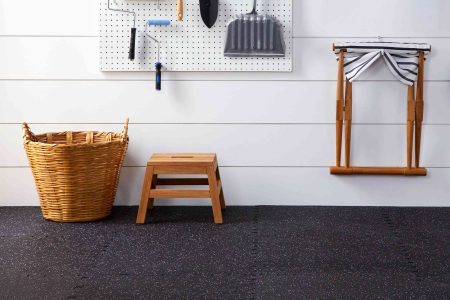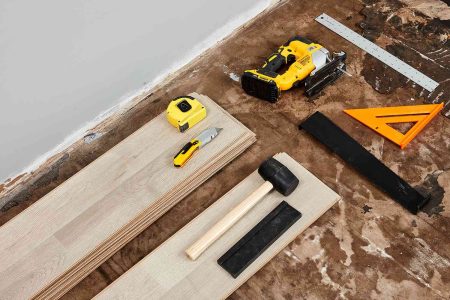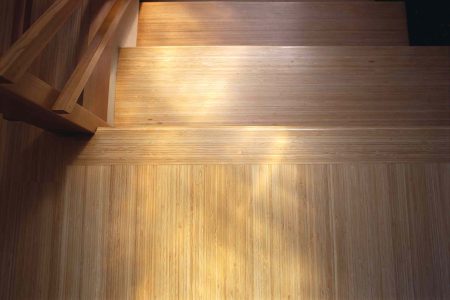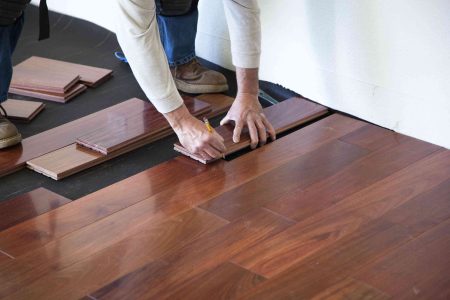Directly below your feet is an ingenious method of layered flooring that has been used for centuries. It is flexible, sturdy, inexpensive, and it can be changed out and repaired. This method includes three layers of flooring that support what is termed the finish floor (the one you see and walk on). These layers under the finish floor include:
- Underlayment: The underlayment is the layer of flooring that sits directly under the finish floor. The underlayment is not considered a structural element and sometimes optional. The underlayment provides a smooth surface on which the visible finish floor sits.
- Subfloor: The subfloor is the important middle layer of a flooring system. The purpose of a subfloor is that it offers a structurally sound flat surface to hold up the underlayment and finish floor. The best material for a subfloor is typically plywood for its strength. Subflooring is not always plywood. It can also be made from OSB (oriented strand board) which is sometimes preferred for its consistency and affordability.
- Joists: The joists make up the bottom structural layer of a floor that supports the other loads of flooring. Joists consist of lengths of wood (or steel) that are arranged parallel to one another to create a strong layer.
Click Play to Learn the Difference Between Subfloor, Underlayment, and Joists
Finish Floor (or Floor Covering)
The finish floor (also known as the floor covering) which you see and walk on might include options such as ceramic tile, solid wood, laminate, engineered wood, luxury vinyl, carpeting, or another surface material. The finish floor material can also be changed out if necessary. It does not provide structural support. If you were to remove the floor covering, you’d see a layer of more permanent flooring, possibly the underlayment or subfloor, both of which are there for support and stabilize the entire floor structure.
Underlayment
You may not always find an underlayment because it’s not required. Underlayment is always a floating type of flooring, and it should never be glued down to the subfloor with adhesive in case you need to repair either layer. Here are types of underlayment for different finish floors:
- Wood: If you are installing solid hardwood or engineered wood flooring, you may be putting down a type of even, blemish-fee plywood that is specifically engineered for underlayment.
- Tile: For wet, mortared applications, such as tile and stone flooring, the underlayment may be a cement backer board.
- Laminate: The underlayment for laminate flooring is a thin foam that comes in rolls and is then taped together.
Subfloor
Most all houses, with rare exceptions, have subfloors. The subfloor is what rests on top of the joists. The subfloor is thick, not very pretty to look at, and hard to walk on. The subfloor is nailed to the joists, but if it becomes loose or warped, it can cause squeaky floors. The plywood or OSB subfloor typically ranges in thickness from 19/32 inches to 1 1/8 inches. If you have a concrete slab floor, the slab itself may be considered the subfloor.
Joists
Joists are the essential structural parts of the layered matrix of a floor because they support every layer of flooring above it. Joists are made of engineered wood, laminated wood, or dimensional lumber. However, if you have a concrete slab floor, you will not have joists. Except for homes with concrete slabs, all houses have joists that hold up the floors.
When the Number of Layers Changes
In unusual instances, you may have only one layer of flooring. Here are the uncommon circumstances where the layers of flooring can change:
- Older homes may have solid hardwood flooring nailed directly onto the joists which means there is no subfloor.
- Hardwood flooring may be installed straight onto the subfloor with only a sheet of red rosin paper intervening as the barrier and no true underlayment.
- If the subfloor is smooth enough, an underlayment may not be needed for a laminate installation.
On the other hand, floors sometimes have more than three layers. For example, when an older home has been extensively remodeled, it’s common to see many layers of old and new flooring if the time and cost of labor to remove unnecessary floor layers were prohibitive.
Determining Type and Thickness
Often it is necessary to find out the type and thickness of your floor’s layers if you are replacing the finish floor. You may have a situation that requires a specific quality of underlayment or subfloor. Some examples include:
- Ceramic tile or natural stone needs to be installed on firm, flat, and deflection-free layers.
- Heavy objects such as cast-iron tubs, refrigerators, and clothes washers need strong flooring.
- An interior non-load-bearing wall needs the strongest subfloor possible.
Here are suggestions for ways to find out how thick your floor covering and/or subfloor are. You will need a straight edge ruler or a tape measure.
- Floor heating vent: Removing a floor HVAC vent is the best way to check for total floor thickness. If you have central heat and/or air conditioning with floor vents, it is very easy to remove the vents by pulling them straight up. With the vent removed, you have a wide, clear view of a cross-section of your floor.
- Top of stairs: Sometimes, the top of a staircase has an unfinished opening that permits a cross-section view of the entire floor. Even if the stairs are fully finished, you can get an approximate reading of the thickness by measuring the distance from the top of the riser to the top of the finish flooring.
- Basement and crawlspaces: This method might give you a rough idea of the layers if the basement’s ceiling and joists are exposed. Reach up and try inserting a straight edge or tape measure up through any space or gap you find between the subfloor panels and take note of the measurement.
- In a closet or pantry: This method only measures the thickness of the floor covering. Often, closets or pantries do not have baseboard molding. By placing your straight edge along the wall, you can insert it between the floor covering and wall, sliding it down until it touches the subfloor.
Read the full article here



